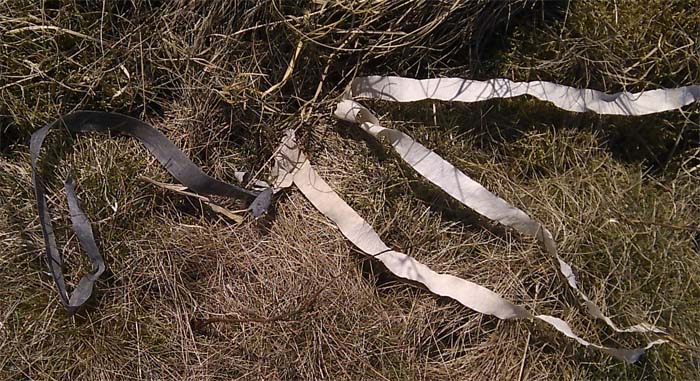|
Everything you want to know about streamers Published: 20/2 2010 - Last update: 30/12 2012 - By Henning Forbech |
||
|
Intro: This page is a collection of information on streamers for F2D Combat. Over the last years I have been gathering facts and results from experiments. Now it is time to publish the results. If you have some information that would complement this page you are welcome to send it to me at: henning(at)forbech.dk |
Index: | |
| |
||
|
Classic streamers: |
||
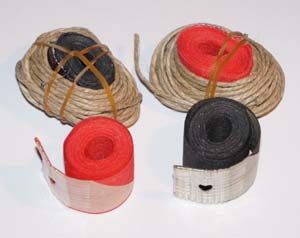 Streamers from forestry tape |
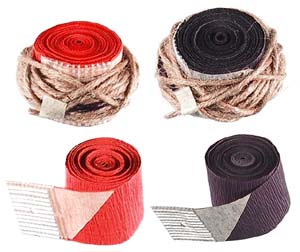 Crepe paper streamers from Mijzlik |
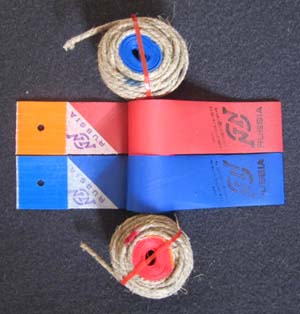 Plastic streamers from Necheukin |
| |
||
|
How to make streamers: Ingemar Larsson have made a description on how to make the knot on streamers for F2D (pdf document) To speed up the process of making streamers I have designed and build a machine for making streamers. Here is a description of the Streamer machine |
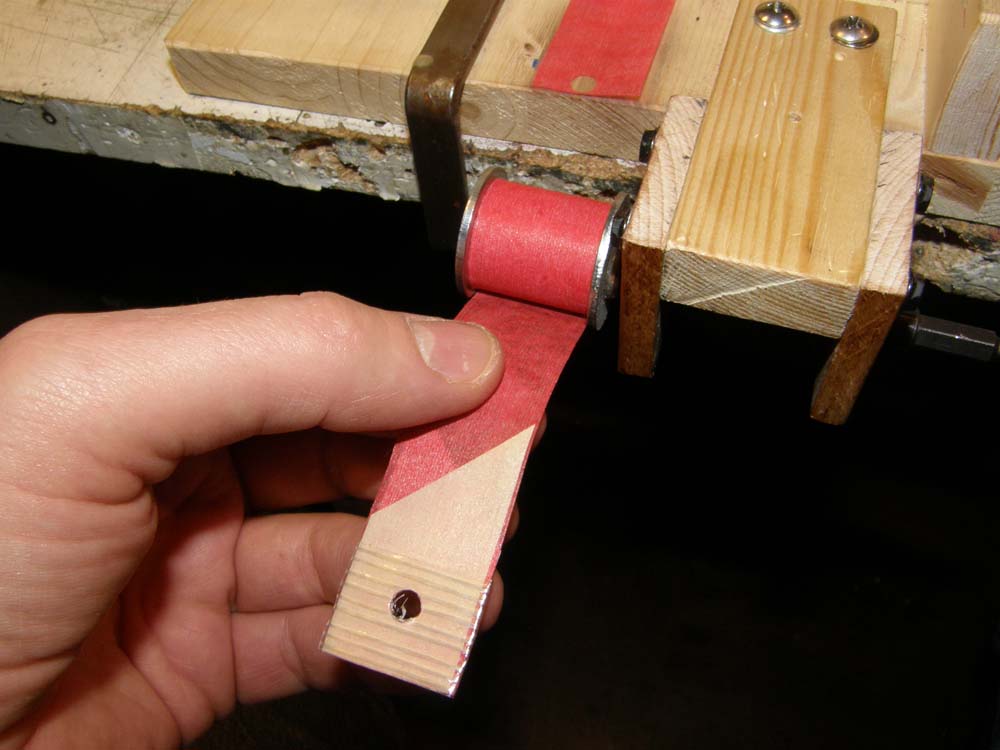
|
|
| |
||
|
Statistics on streamers: Some years back Mike Willcox did some research on streamers. The average number of cuts vary with the streamer material. From the tree competitions we can calculate the averige number of cuts pr. streamer: Plastic: 1.54 (Necheukin type) Soft paper: 1.66 (Forestry tape) Hard paper: 1.78 (Mejzlik type) More statistics on F2D combat |
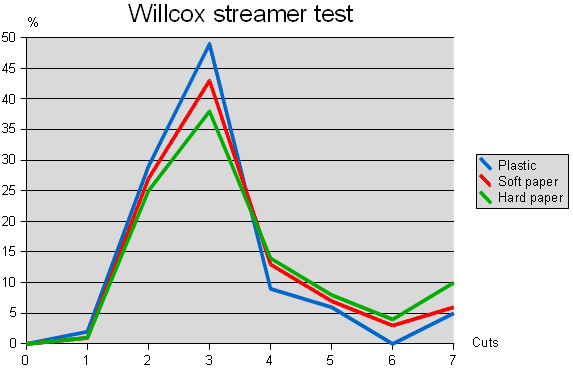
|
|
Mike Willcox streamer test: We ran tests a few years back with a video camera mounted on a pole to check the tracking of the streamers. We found that the plastic streamers tracked much different through the circle then the paper. It was so much different that we made sure when we practiced for a big event that we used the same kind of streamers as would be used at the competition. We have been using plastic for years here in the U.S. and my father first introduced them to the World F2D community in 2004 at the world champs. We also found the plastic streamers can take on different characteristics. For example it is possible to cut the whole streamer except for the knot and the cut will sometimes free fall as if it has a knot when actually the knot is still attached to the plane. It has to do with the airfoil sometimes created on the plastic. We also did many test on the angle of planes during a cut. On plastic streamers the angle has to be less or it is more likely to break near the knot. We also showed stats on streamer cuts. When plastic streamers were used at a competition we got these results cuts 0-0= 2% (usually do to a disqualification) cuts 1-1 = 29% cuts 2-1 = 49 % cuts 2-2= 9% cuts 3-2 = 6% cuts 3-3 = 0% total cuts over 6 combine for a match = 5% That was for 22 pilots, double elimination, 8% refly included in survey When soft paper (forestry tape) streamers were used at a competition we got these results cuts 0-0= 1% (usually do to a disqualification) cuts 1-1 = 27% cuts 2-1 = 43 % cuts 2-2= 13% cuts 3-2 = 7% cuts 3-3 = 3% total cuts over 6 combine for a match = 6% That was for 33 pilots, double elimination, %5 refly included in survey When hard paper streamers were used at a competition we got these results cuts 0-0= 1% (usually do to a disqualification) cuts 1-1 = 25% cuts 2-1 = 38% cuts 2-2= 14% cuts 3-2 = 8% cuts 3-3 = 4% total cuts over 6 combine for a match = 10% That was for 25 pilots, double elimination, %5 refly included in survey Basically after my results we came to the same conclusion before we started. When plastic streamers are used there are less cuts and defense is more important. Almost half the matches ended in 2-1 cuts. Plastic material is cheap and can be purchased at many local grocery stores. Plastic also holds up to wet weather conditions. Hard paper results in higher cuts and less re-flys. The forestry tape (soft paper) is kind of in the middle. Result is more cuts then plastic, but less than hard paper. Forestry tape does not stop when cut goes over venturi, but the material is more expensive and makes less streamers. We found it also holds up to wet weather conditions fairly well. Forestry tape is easier for us to find here in the U.S. then the hard paper and also is biodegradable. We found most pilots like using the paper type streamers because you get more cuts. /Mike Willcox |
| |
|
Cost of streamers:
In a F2D competition each pilot has two lives and it takes 2 matches or 4 streamers to "kill" him. Some matches must be reflow and sometime a damaged streamer must be replaced. To be sure to have enough streamers at the end of competition organizers normally calculate 5 streamers per pilot. The entering fee at a competition must not only cover the cost of streamers but also pay for judges, scores, etc. The cost of the streamers is only a small part of the entry fee. For a pilot the cost of traveling and accommodation at the competition is the most expensive part of joining a competition. The cost of models, propellers, glowplugs, fuel and wear on engine is also significant but the entry fee is relative small part of the total cost. Sometimes organizers try to save a little by using cheaper streamers of a lower quality. The quality of streamers affects the quality of the combat matches. When a pilot have spent a lot of money on going to at competition it is silly to reduce the joy of the sport by saving a few dollars on the streamers. Imagine we had three types of streamers:
I think all pilots would choose the best possible streamer. The relative small extra cost is a low price for a much better combat event. The experimental streamer is an attempt to develop this "Super Streamer" |
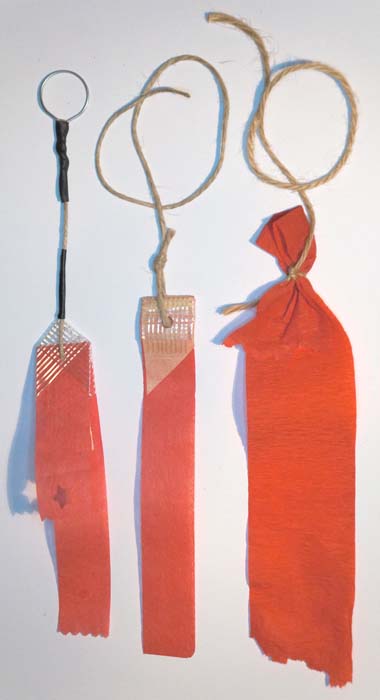 Three levels of quality and price |
|
| |
||
|
Tracking: Streamer made from forestry tape is good at following the path of a model (Sebnitz, 2011). 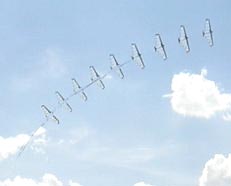
Streamer from different material do behave different in flight |
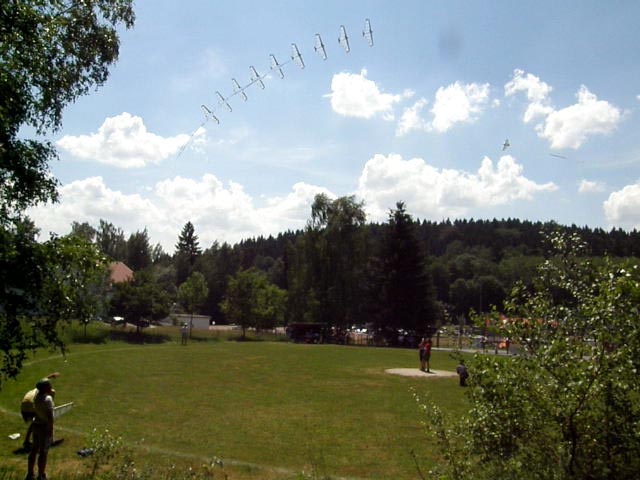
|
|
At the World Cup competition in Barton, 2008 a test flight was done with two different streamers on the same model at the same time.
A plastic streamer from Nikolai Necheukin (blue) and a streamer from bio degradable paper (red). 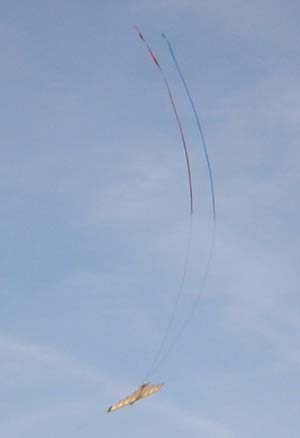
|
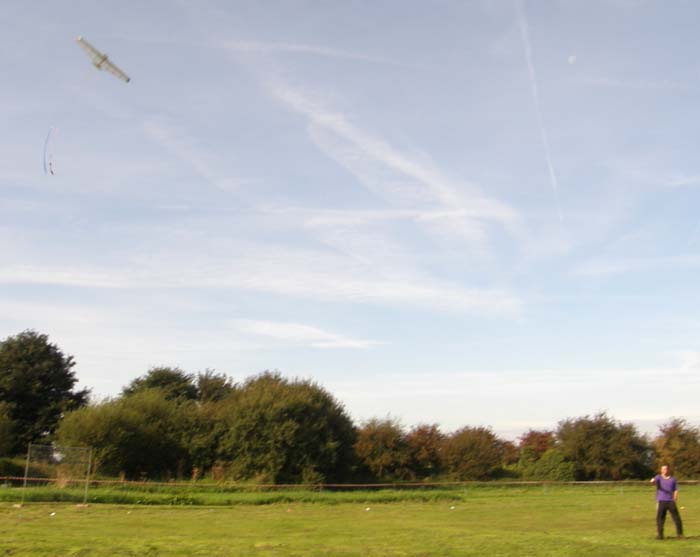 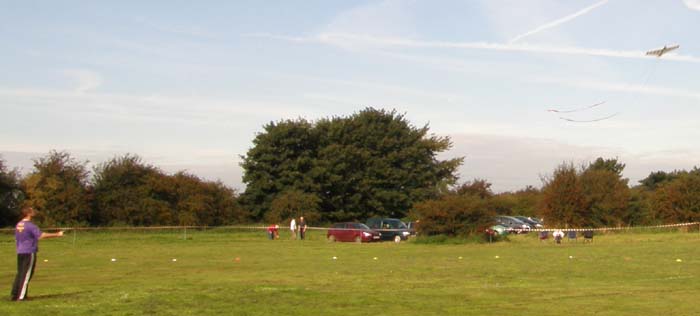 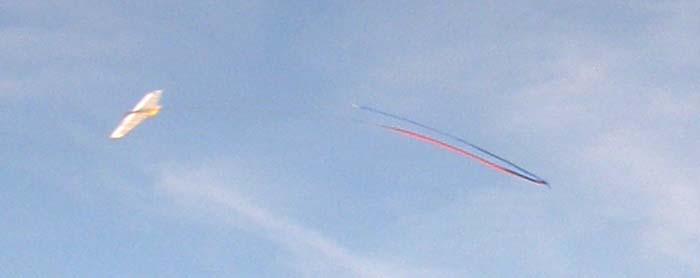
|
| |
|
|
Drag on streamers: As a part of the Fact Finding Mission the drag on three types of streamers was measured from a car. The result from the highway test:
Use the Control Line Calculator to make basic calculations on control line models |
|
| |
|
|
Maximum Length: To find out how long a streamer could be before it would be cut by the model in a tight loop some test flight was don with a long streamer from video tape. It is very easy for the model to pull the video tape. 
www.pinvinen.dk The test with the video tape streamer gave these results:
This test indicates that the maximal streamer length (from streamer hook to the end of the paper) will be around 9 m if the streamer follows the flight path. But all streamers will have a higher drag than the video tape. With a higher drag the streamer will be pulled into the center of the loop as well as into the center of the flying circle. The streamers are today between 4.75 m and 5.5 m. There should be room for increasing the streamer length to 6 or 7 m before the models will be able to cut their own streamers. |
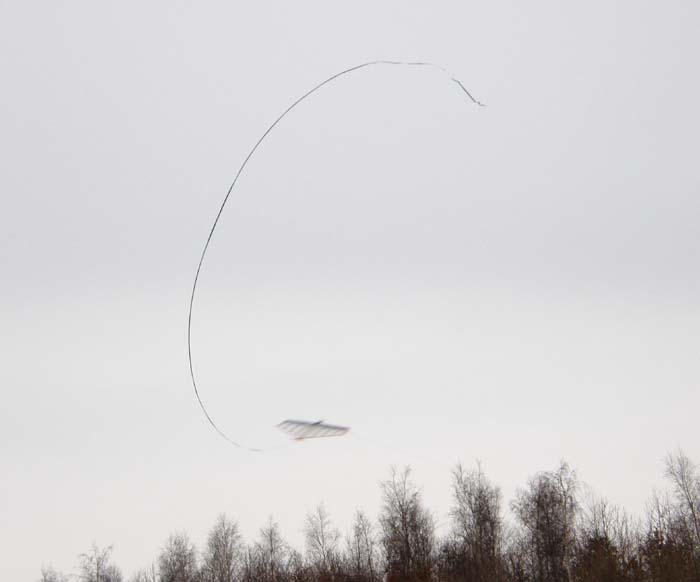
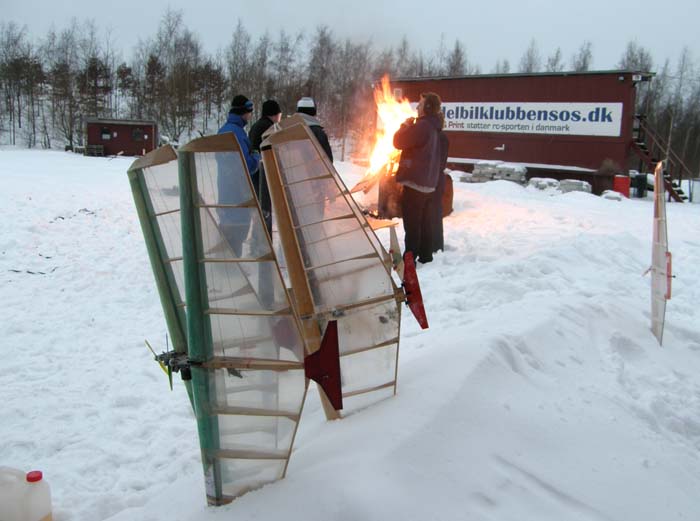
|
|
|
If the streamer gets extremely long - more than 100 m - it will also become a problem to avoid hitting your own streamer. The tape will stick to the flight path and with the long tape maneuvers can be made visible. |
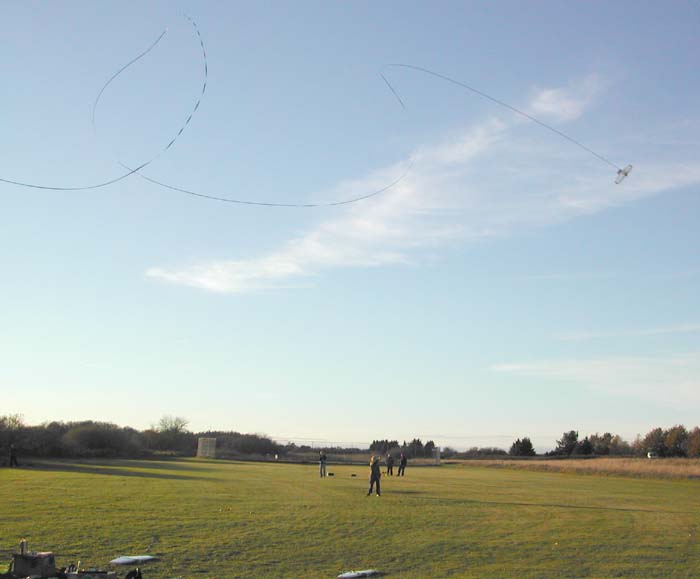
First test with a very long streamer on a diesel model. Herning, Denmark, 2004 Video from another test with a long streamer made from video tape |
|
|
|
||

